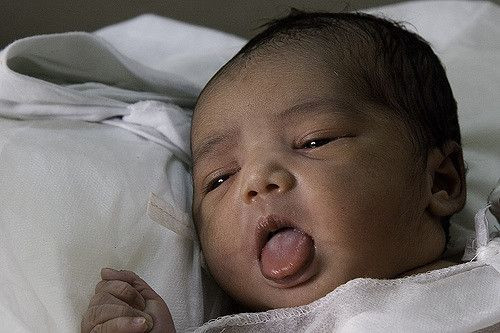Wiping A Mom’s Vaginal Bacteria Onto Her Baby After C-Section May Provide Protective Germs

Passing through the birth canal, a baby is doused in the mother’s protective germs, and this helps the infant develop its own bacterial defenses. Babies delivered by c-section, though, never benefit from this experience. In a micro scale study, scientists demonstrated that wiping cesarean-born babies with vaginal bacteria at least partially restored this form of inherited immunity.
The nearly 100 trillion bacteria which reside in our digestive system — our gut microbiota —contribute to our metabolism by helping to break down complex carbohydrates and starches. Yet, they also play a crucial role in the development of our immune systems by thwarting the growth of harmful bacteria. Because these internal bugs even produce vitamins and hormones, many researchers theorize these bacteria act as an unofficial organ within our bodies. That said, scientists don’t clearly understand the granualar details of that process.
In the past, it has never been possible to culture every species of bacteria and learn the roles each performs in the gastric tract. Recent advances in genetic sequencing, though, suggest our gut microbiota contain about 3.3 million genes. Based on this new understanding of genetic variety, researchers say a less diverse community of gut bacteria goes hand in hand with increased obesity and insulin resistance.
Birth & Bacteria
Dr. Maria Gloria Dominguez-Bello, lead author of the study and a microbiologist at NYU, has long been concerned with the gut microbiome, especially in babies. Based on her own previous studies which demonstrate how passage through the vaginal canal colonizes newborns with particular bacterial families, she theorizes a lack of exposure could explain why C-section babies are at greater risk of developing type 1 diabetes, asthma, and even obesity.
For the current study, then, she and her colleagues attempted an intervention with four c-section babies. Using gauze to gather a mother’s birth-canal bacteria, the researchers smeared these germs on the c-section-delivered baby. Then the team compared the gut flora of these babies to that of other infants.
When compared to the other C-section babies in the study, “the gut, oral and skin bacterial communities of these newborns during the first 30 days of life” showed a more enriched vaginal bacteria environment. The gut flora of these four babies more closely resembled the vaginally-delivered babies, but not completely.
Though Dominguez-Bello and her team demonstrated vaginal microbes can be partially restored at birth, “the long-term health consequences of restoring the microbiota of C-section–delivered infants remain unclear,” they concluded.
Speaking with Scientific American, Dominguez-Bello said she is receiving enquiries about her methods, which some families are following without the benefit of the extensive testing she recommends. Apparently, the intuited soundness of this process is enough for many eager parents.
Source: Dominguez-Bello MG, De Jesus-Laboy KM, Shen N, et al. Partial restoration of the microbiota of cesarean-born infants via vaginal microbial transfer. Nature Medicine. 2016.
Published by Medicaldaily.com



























